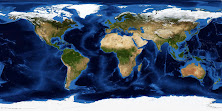Why focus on COGs/Regional Councils in the U.S.? "the substate district is essentially an administrative tool of states"
The prior three posts which demonstrate the levels of the global geocode will raise the question, "Why focus on COGs/Regional Councils in the U.S.? The following excerpt from the paper: "Prototype Global Geocoding of Political Geographies for Library and Data Management - Wikipedia Example," a paper to be presented at the Applied Geography Conference, October 31, 2013 in Annapolis, Maryland.
4. SUBNATIONAL
GEOCODING OF POLITICAL GEOGRAPHIES FOR REGIONS
"The
historic primary substate political region of States is the county or its equivalent.
It is for these areas that Census data is collected and maintained. Four states
have independent cities for which census data is collected. Virginia has 39, while Maryland, Missouri and
Nevada each have one. Though Connecticut,
Rhode Island and Massachusetts have eliminated some or all counties, census
data is compiled for historic counties which have no current governance
function. State data is collected on the
same geography and is a resource.
"As
previously noted, though Federal programs have encouraged and funded
multi-jurisdictional regional approaches, the substate district is essentially
an administrative tool of states. Generally
there are a variety of agency based multi-jurisdictional substate district systems
used by departments and agencies for program administration. While they may interface with localities and
local officials for planning and programming, there is rarely a representative organizational
structure. The Federal Metropolitan
Planning Organization process is an exception, but it is confined to the
defined urbanized areas and is for transportation planning only. Regional councils are, or can be, multi-issue
in their planning.
"The
prototype uses the state based COG/regional council alignments as the substate
region. Most states have complete
systems.For Delaware and Hawaii, the county is the substate
region. Compared to other systems of
substate regions, the COG/regional councils have the advantage of local
government representation appointed by the member local governments, the
responsibility for a variety of planning processes which include local
government planners, and, in many cases, the ability to implement or promote
the implementation of regional programs. Having worked together for over 40 years in
some regions, there is some “regional community” social capital. Staffs work with communities and their data, in
effect cultivating “regional intelligence.” Multi-state councils enable coordination
across state lines, while operating consistent with regional council requirements
of each state. A national, single-layer
of substate regions is the base product. If substate region boundaries are renegotiated,
as is underway in Connecticut, the codes can be changed to match new alignments.
Multi-state regions are the sum of
substate components."
In 2011, two posts were made showing substate region maps for COGs/Regional Councils and alternatives for those with incomplete systems by state. Part 1 - Maine to Texas and Part 2 - Michigan to Hawaii
If you are interested in more information, send me an email for the current paper and related information. Tom.Christoffel (at) gmail.com

